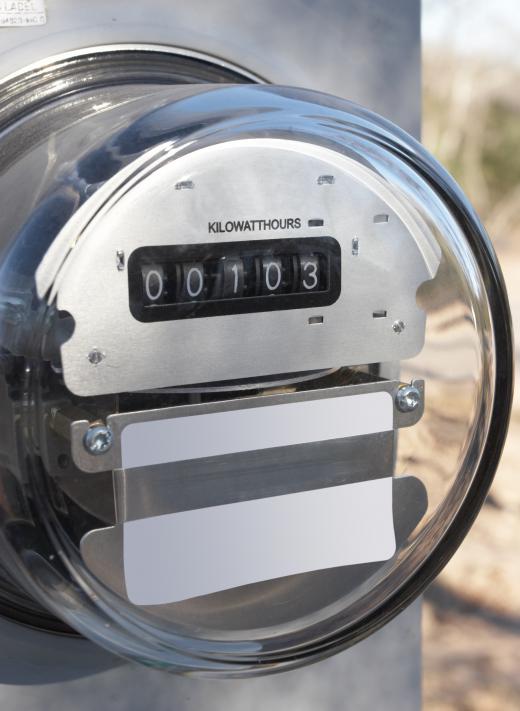What is Electrical Continuity?
 Mary McMahon
Mary McMahon
Continuity refers to being part of a complete or connected whole. In electrical applications, when an electrical circuit is capable of conducting current, it demonstrates electrical continuity. It is also said to be “closed,” because the circuit is complete. In the case of a light switch, for example, the circuit is closed and capable of conducting electricity when the switch is flipped to "on." The user can break the continuity by flipping the switch to "off," opening the circuit and rendering it incapable of conducting electricity.
For consumers, the most obvious sign that there is an electrical continuity issue with their wiring is when plugged-in electrical devices fail to work. However, unintended breaks in continuity can have more serious consequences, such as electrical fires or damage to electrical equipment, and therefore, it is recommended that all electrical wiring be kept in good working order and properly maintained.

A number of devices are manufactured to assist consumers in testing electrical continuity, ranging from multimeters, which have a wide range of additional applications, to simple testers that light up if continuity is present. These devices use two electrical probes, which form a complete circuit when touched together. Consumers can test the device to ensure that it is working properly by turning it on and touching the probes together – the meter should read zero, or the indicator light should turn on, indicating a closed circuit. When the probes are not touching anything, the metered device will read infinity, showing that the circuit is open.

When testing a circuit for electrical continuity, consumers should first cut off power to the circuit by unplugging the device or turning off the main circuit breaker. Failure to do this may result in severe shock. To test for electrical continuity, turn on the testing device and place one probe at each pole or terminal of the circuit being tested. When testing a switch, for example, if the switch is in the "on" position, the reading should be close to zero, and when the switch is off, the reading should be infinity. A simpler continuity tester with an indicator light will be illuminated when the switch is on, and dark when it is not.
AS FEATURED ON:
AS FEATURED ON:













Discussion Comments
Think of voltage as the size of the car and amps as how fast it is traveling.
A massive car traveling extremely slowly will only nudge you (OK, it might bruise!) but a small car traveling very fast... Well, you can figure that out.
@jessica 500: Voltage will not hurt you. It is Amps that will kill or seriously injure, etc.
@wisemommy12- I agree with you. Playing with electricity of any form is like playing with fire. We as consumers have been taught this, and for a good reason.
My father, who is an electrician, said it really does not take much voltage to kill or seriously injure someone. It is best to leave any tests to an electrician, even if you have the right electrical tools. An electrician can conduct a test and tell you what you need to know without worry.
Even though you can find do-it-yourself books on how to conduct a test, call an electrician. Better to be safe than sorry.
I would think that electrical continuity testing would be very dangerous for the average consumer. I would be terrified to try it myself. I guess though, that it would be even more dangerous not to test the circuit, so it is a good thing they are available. This article does a good job of informing the everyday consumer in how to test the device and making sure they know to shut off the electrical current before testing the circuit.
Post your comments